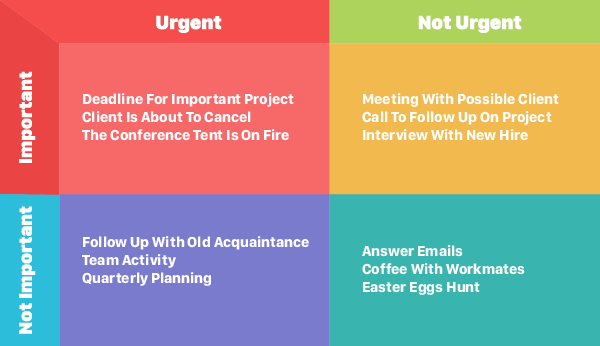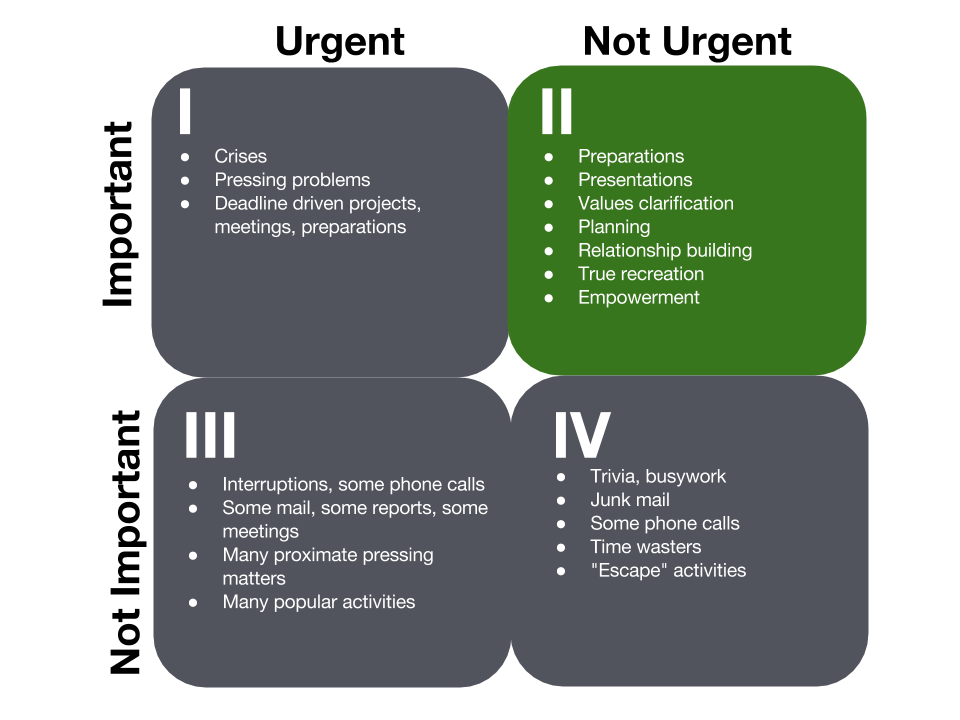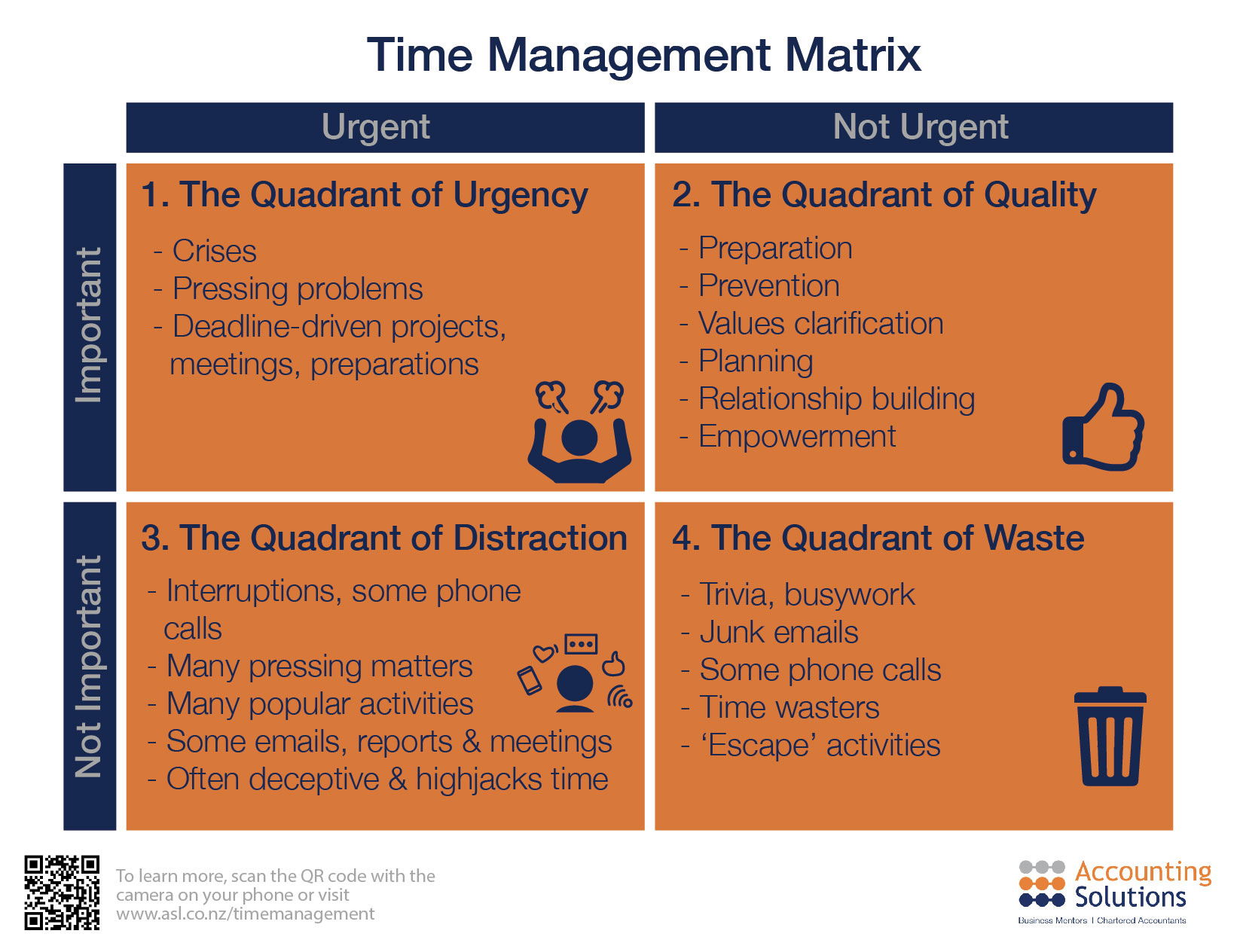


I grew up out on Long Island, in the suburbs of New York City, in the 1950s and early 60s. The event that got me thinking about this happened in 2007. (If you have a long list in quadrant IV, you aren’t getting the point!) The matrix can also be drawn like this, so that we can put our own categories in each quadrant, or put specific goals and activities in each quadrant for the day, the week, or the month.

(This is not helped by the ease with which we can all spend countless hours wasting time on the Internet.) We need to spend a little bit of time in quadrant IV, because we all need some down time, but it shouldn’t take over our lives. We obviously have to do some of quadrant I (especially if a baby is crying), but if we are able to spend more time in quadrant II, there shouldn’t be as many crises arising. Quadrant II is where we plan, reflect, are creative, nurture relationships, and prepare. His premise is that we spend most of our time in quadrant I and III, and more than we should in quadrant IV, leaving no time for the most valuable quadrant of all, quadrant II. “Put first things first” is where Covey introduces his Time Management Matrix, which is a very useful little tool to use, even on a daily or weekly basis, to remind us to make our decisions based more on what’s important and less on what’s urgent. The reality is that most of us are inclined to attend to the trivial things that come at us every day and put off what really matters. He makes the point that in order to be effective – and therefore happy – in both your personal life and your work life you need to focus more on what is important to you and less on what is urgent. In placing “put first things first” in context, Covey asks how many people on their death bed wish that they had spent more time at work.

I recalled Habit 3 recently when I was thinking about how lucky I was to have fulfilled a very long-term wish before it was too late. In fact, in his landmark book The 7 Habits of Highly Effective People, Habit 3 is “Put first things first”, which specifically covers principles of personal management. For those of you who are familiar with the late Stephen Covey and his work in leadership and business, you’ll know that his many lessons can be applied to our personal lives as well as to our work lives.


 0 kommentar(er)
0 kommentar(er)
